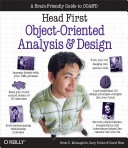Unified Modeling Language (UML) and Enterprise Architect in Cloud-Native Software Architecture Design: A Strategic Framework with KeenComputer.com and IAS-Research.com
Abstract
The transformation of modern software systems toward cloud-native architectures—microservices, containers, and serverless deployments—demands robust modeling and architectural frameworks. This research paper explores how Unified Modeling Language (UML) and tools like Sparx Enterprise Architect (EA) can guide architectural design, governance, and implementation for complex distributed systems. Drawing insights from Head First Object-Oriented Analysis & Design and Head First Java, the study highlights the synergy between object-oriented design principles and cloud-native paradigms. Finally, it illustrates how KeenComputer.com and IAS-Research.com can empower enterprises through end-to-end software architecture, modeling, and deployment solutions.
1. Introduction
Cloud-native systems prioritize scalability, elasticity, and resilience through distributed microservices and containerized infrastructures. Yet, such systems increase complexity across architecture, data consistency, and service coordination.
UML offers a standardized, visual framework for capturing requirements, behaviors, and dependencies. When combined with Enterprise Architect (EA)—a modeling and governance tool supporting UML, BPMN, and TOGAF frameworks—organizations can bridge business goals and technical execution. This approach aligns with the Head First methodology: learning and designing by connecting conceptual thinking with hands-on application.
2. UML in Object-Oriented and Cloud-Native Design
2.1 From Object-Oriented to Cloud-Native Thinking
According to Head First Object-Oriented Analysis & Design, effective software design begins with modeling real-world objects and interactions. This foundational mindset extends naturally to cloud-native development, where microservices can be seen as distributed “objects” communicating through APIs and events.
Key UML artifacts supporting this paradigm:
- Class Diagrams → define microservice interfaces and data models.
- Sequence Diagrams → capture inter-service communication flows.
- Deployment Diagrams → map containers, clusters, and load balancers.
- Component Diagrams → identify service boundaries, dependencies, and contracts.
UML’s abstraction and encapsulation parallel the cloud-native goals of isolation, scalability, and loose coupling.
3. Enterprise Architect (EA) as a Strategic Tool
Sparx Enterprise Architect extends UML’s descriptive power with model-driven design and system governance. For cloud-native architectures, EA offers:
- Framework Integration: TOGAF, Zachman, BPMN, and ArchiMate support.
- Traceability: Mapping from business goals to microservices and runtime artifacts.
- Model-to-Code Generation: Automates transformation from UML to platform-specific implementations.
- Collaboration: Repository-based multi-user modeling for distributed teams.
- Simulation: Early validation of architecture and workflows.
EA allows cloud architects to create platform-independent models (PIMs) and platform-specific models (PSMs)—ideal for environments like Kubernetes, AWS ECS, or Azure AKS.
4. UML for Cloud-Native Software Architecture
4.1 Microservices and Containerization
UML component diagrams model microservices and their dependencies, illustrating RESTful or gRPC communication. Deployment diagrams show container topology and service discovery via Kubernetes or Docker Swarm.
4.2 Serverless and Event-Driven Architectures
Activity and state diagrams model asynchronous event handling, reflecting workflows in AWS Lambda, Google Cloud Functions, or Azure Durable Functions.
4.3 Continuous Integration and Deployment
By linking UML models to DevOps pipelines, teams can:
- Generate Infrastructure-as-Code (Terraform, Ansible).
- Validate architecture consistency pre-deployment.
- Automate documentation updates.
5. Cloud-Native Design Principles and UML
5.1 Alignment with SOLID and DRY
Head First OOA&D emphasizes modularity and maintainability. UML enforces SOLID principles through class and interaction diagrams:
- Single Responsibility: Each microservice models one bounded context.
- Open/Closed: Extensible via APIs, not direct modification.
- Dependency Inversion: Achieved through interface-based service definitions.
5.2 Agile and Iterative Modeling
UML and EA align with agile cycles—enabling iterative refinement as system requirements evolve. Models act as living blueprints integrated into DevOps workflows.
6. Use Cases
Use Case 1: E-Commerce Cloud Transformation
A retail platform transitions from monolithic Java to microservices. UML and EA model catalog, payment, and logistics services. KeenComputer.com designs the architecture, automates CI/CD pipelines, and ensures resilience through container orchestration.
Use Case 2: AI-Powered Lead Generation System
IAS-Research.com employs UML sequence and class diagrams to design AI inference services and data ingestion flows. Models drive scalable deployments integrating RAG-LLM components and event-driven analytics.
Use Case 3: SaaS CRM Modernization
KeenComputer.com and IAS-Research.com collaborate to model multi-tenant CRM architecture. UML diagrams define tenant isolation, authentication, and integration APIs, guiding automated deployment on Azure.
7. Contributions of KeenComputer.com and IAS-Research.com
KeenComputer.com
- Specializes in Enterprise Architect deployment and UML modeling for cloud-native systems.
- Provides DevOps, containerization, and continuous delivery services.
- Delivers consulting and training for software architecture teams transitioning to microservices.
IAS-Research.com
- Focuses on AI-driven software modeling, integrating UML with knowledge graphs and intelligent documentation.
- Conducts applied research in architecture optimization, RAG-LLM pipelines, and software observability.
- Supports academic–industrial collaboration in systems design research.
Together, they form a complete architecture ecosystem—from conceptual modeling to automated deployment and continuous evolution.
8. Future Directions
The convergence of UML, AI, and DevOps automation is leading toward intelligent architecture design assistants. Innovations include:
- LLM-assisted UML generation from requirements.
- Digital twins of enterprise systems modeled in EA.
- RAG-enhanced architecture validation combining knowledge retrieval with natural language reasoning.
These developments will redefine how cloud-native systems are designed, validated, and evolved.
9. Conclusion
UML and Enterprise Architect provide a structured, visual, and iterative framework for designing cloud-native systems that balance agility with rigor. Integrating OOA&D principles from Head First Java ensures that cloud software remains modular, reusable, and comprehensible.
Through the combined expertise of KeenComputer.com and IAS-Research.com, organizations can harness UML-driven cloud architecture to accelerate innovation, maintain governance, and align technology with business growth.
References
- Sierra, K., Bates, B., & Gee, T. Head First Java (3rd Edition), O’Reilly Media, 2022.
- Freeman, E., Robson, E., Bates, B., & Sierra, K. Head First Object-Oriented Analysis and Design, O’Reilly Media, 2006.
- Object Management Group. Unified Modeling Language (UML) Specification, Version 2.5.1.
- Sparx Systems. Enterprise Architect User Guide, 2024 Edition.
- Bass, L., Clements, P., & Kazman, R. Software Architecture in Practice, 4th Ed., Addison-Wesley, 2022.
- KeenComputer.com — Enterprise Cloud and Architecture Consulting, 2025.
- IAS-Research.com — Applied AI and Cloud Systems Research, 2025.



